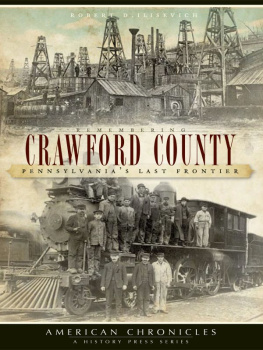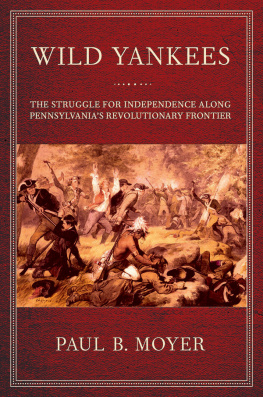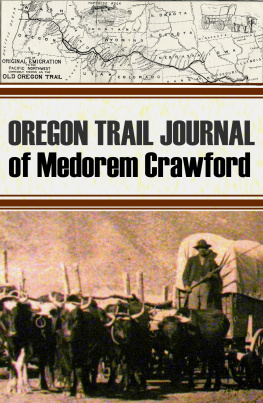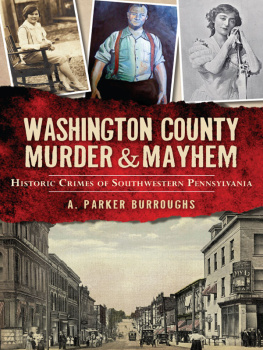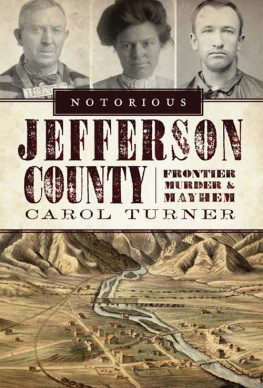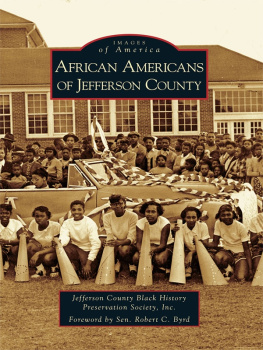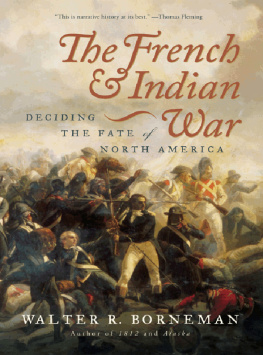

Published by The History Press
Charleston, SC 29403
www.historypress.net
Copyright 2008 by Robert D. Ilisevich
All rights reserved
First published 2008
e-book edition 2013
ISBN 978.1.62584.887.1
Library of Congress Cataloging-in-Publication Data
Ilisevich, Robert D.
Remembering Crawford County : Pennsylvanias last frontier / Robert D. Ilisevich.
p. cm.
print edition ISBN 978-1-59629-570-4
1. Crawford County (Pa.)--History. 2. Frontier and pioneer life--Pennsylvania--Crawford County. 3. Crawford County (Pa.)--Politics and government. 4. Crawford County (Pa.)--Biography. 5. Crawford County (Pa.)--Social conditions. I. Title.
F157.C77I455 2008
974.897--dc22
2008037210
Notice: The information in this book is true and complete to the best of our knowledge. It is offered without guarantee on the part of the author or The History Press. The author and The History Press disclaim all liability in connection with the use of this book.
All rights reserved. No part of this book may be reproduced or transmitted in any form whatsoever without prior written permission from the publisher except in the case of brief quotations embodied in critical articles and reviews.
CONTENTS
PREFACE
This is not a traditional history book. Structurally, it defies chronology, lacks a directional pointer and is devoid of footnotes and bibliography. Simply, it is a set of essays about interesting persons and episodes in two hundred years of Crawford County history. A number of these writings have previously appeared in the Meadville Tribune and the Crawford County Historical Society newsletter, and have been edited for this publication.
Subjects and accompanying events were chosen for their contribution to a better understanding of the countys past. With only twenty-eight essays, a wider selection was out of the question. Thus, many equally important subjects did not make the final cut. A partial list of these includes churches, sports, fraternals and unions, minorities, military and the environment. No effort was made to discriminate against the selection of any of these.
Hopefully, each of the following essays will raise questions and lead to additional investigation and fresh interpretation. Constant revisionism is what makes the study of history move forward.
If there is a theme in these essays, it is the individual with leadership qualities who resolved problems or prevented some from even happening. There was not a single group, class or particular part of the county that produced this kind of individual. He could have been a businessman, farmer, educator, writer, politician, inventor or just a dreamer. All of these appear in the essays. Collectively, they committed themselves to advancing the community from one generation to the next, from frontier days to the computer age.
I am first indebted to those past local historians who not only wrote of their times, but who also were mindful of the fact that without source materials there can be no history. They labored to collect and preserve manuscripts, photographs, newspapers and maps to enable future historians to examine the past better.
Second, I am grateful to the Crawford County Historical Society for allowing me free access to its wonderful collectionone of the finest in the commonwealthand permitting the use of its staff and office hardware.
Third, special thanks go to a group of four, without whom this work would not have been possible. Anne Stewart, who knows more about Meadville history than anyone I know, consistently assisted me and helped select special photographs. Also helping to obtain the more difficult finds was Larry Wonders, who has inventoried thousands of the societys photographs and knows exactly where they are located. Without Kevin Pipp, the rest of us would have been at a loss to scan images and work with the editor on the technical side of publishing. And full credit for typing, editing and formatting the manuscript has to go to Natalie Kelley-Wilson, who understands and applies the growing wonders of the computer.
Finally, a nod of appreciation goes to Jonathan Simcosky, Jaime Muehl and the editorial staff at The History Press for doing what was necessary to produce the finished product and to the Meadville Tribune for permitting the republishing of some of the essays.
LOOKING AT CRAWFORD COUNTY
In May 1788, David Mead, leading a small band of future settlers to their new home in Northwest Pennsylvania, knew, along with the others, that the problems they were about to face were strong enough to cause the men to turn back. Their destination was the former native village of Cussewago that stood on the southwest shore of the creek of the same name. They conjured up troubling memories of struggling with previous frontiers back east. They hoped that this frontierPennsylvanias lastwould not be as bad. After all, they planned to bring their families out here once initial settlement had been made.
Mead must have known of George Washingtons report to Governor Robert Dinwiddie of Virginia, submitted after he had made his famous journey to this part of Pennsylvania in 1753 to inform the French that they were on Virginia soil. Washington wrote of traveling over much good landextensive and very rich meadows, one of which I believe was nearly four miles in length. Then again, Mead may have learned of General William Irvines 1785 exploratory report of the same region, in which he also spoke of the good land.
Mead was personally familiar with the area to which his party was heading. In the previous year, he and his brother John had explored the flats around the confluence of the Cussewago with French Creek. Apparently the grass-covered fields they found had been previously cultivated by either an earlier native culture or the French.
The nagging question that haunted everyone in Meads party focused on the Native Americans they anticipated finding in the area. Since the Revolutionary War, the national government had tried to resolve differences with Western tribes regarding future white settlements in the Ohio country. The white mans diplomacy failed when some of the tribes, including the Miami and Shawnee, insisted on the Ohio River as the undisputed boundary.
The Seneca, the largest and westernmost tribe of the Iroquois Confederacy, opposed any plan that might lead to war. The Seneca essentially controlled French Creek Valley. Its local chief, Cornplanter, whose people lived in the upper reaches of the Allegheny River, eventually befriended Meads settlers and hoped to arrange with the national government certain benefits for his people. Could this powerful chief possibly keep the Western tribes in check with this kind of diplomacy? Meads people hoped so.
Closely akin to the potentially hostile western tribes were those tribes along the Canadian border that had supported the British during the Revolutionary War. They were becoming increasingly restless because they stood between the Americans, who didnt care to have anything to do with them, and the British, whose support had dwindled once the war had ended. Unfortunately for all concerned, with peace restored, not all of the issuesparticularly that of the Northwest postshad been satisfactorily resolved. What this meant to Meads party was the horrible prospect of restless tribes suddenly becoming hostile as well.
Finally, Mead was aware of the growing land problem in the northwestern region of Pennsylvania. Actually, it became the biggest ongoing headache for settlers in the two decades following the 1788 settlement. Conflicting claims were at the heart of the problem. Mead and his party had experienced this kind of conflict back in Northumberland Countya conflict between Connecticut and Pennsylvania over lands in the Wyoming Valley. Mead and others had lost in that legal battle. Pennsylvania compensated some settlers for their losses. Nearly eight years after he had settled at Cussewago, Mead also received compensation with Wyoming credits that entitled him to receive four hundred acres along Sandy Creek, miles south of his settlement.
Next page
